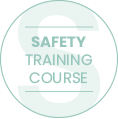Auditing techniques (STC01)

Context
This training covers the complete audit cycle from initial planning to final closure and discusses how to implement practical, value-adding solutions in response to audit findings.
The content provides industry best practices with regard to audit techniques across several safety sensitive environments.
Competent auditors having high credibility within their organisations ensure that relevant standards are followed, and processes are continuously improved. The global approach to auditing proposed in this training ensures further identification and eradication of costly and non-value-adding activities.
Training items
- Compliance monitoring systems techniques and principles.
- Traditional and ‘system’ auditing philosophies.
- Risks and defences – the link to the compliance monitoring system.
- Audit planning.
- Opening and closing meetings and interview techniques.
- Gathering evidence, product/service sampling techniques and limitations.
- Root cause analysis and accident causation.
- Audit reporting, tracking and closure.
- The ISO and the regulatory audits, differences, and similarities.
- Audit classification.
- Classification of findings.
- Auditor independence.
- Documentation analysis.
- The ISO 19011 (auditing management systems) standard.
- Auditing techniques and the human factor.
Training objectives
- Enhanced competence to audit against applicable regulations for compliance and identification of deficiencies.
- Achievement of consistency and thoroughness of approach across all areas of responsibility.
- Identifying under-performing processes and driving system improvements to positively affect safety performance.
Administration
- Duration: 2 days basic/4 days advanced.
- Deliverables: All participants will receive a certificate of attendance.
Perspective participants
- Current and perspective auditors.
Prerequisites
No specific prior knowledge is required to attend this training.
WE WILL REPLY AS SOON AS POSSIBLE
"*" indica i campi obbligatori